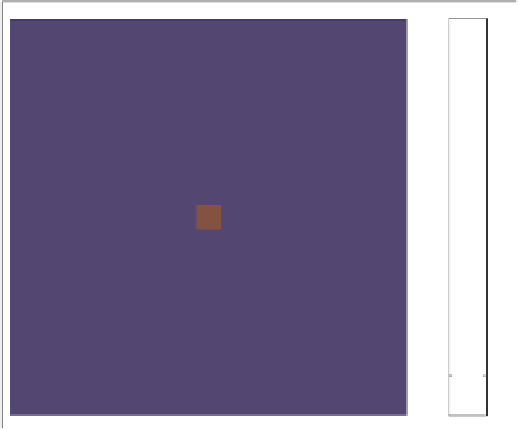Image Processing Reference
In-Depth Information
1
0.9
0.8
0.7
0.6
0.5
0.4
0.3
0.2
0.1
0
Fig. 8.1. A characteristic function that corresponds to a square in 2D.
We now multiply
f
with the characteristic function
χ
D
(
r
) to obtain a limited ex-
tension function from a periodic function,
χ
D
(
r
)
f
(
r
). We assume that
D
fits entirely
1)
T
, the
Nyquist block
. The
Nyquist block defines one period of the function
f
which is repeated in all possi-
ble coordinate axis directions to cover the entire ND space. The boundaries of the
Nyquist block have the distance to the origin,
π
, implying that the distances between
samples are integer values in directions parallel to the coordinate axes. We wish to
study how the finite extension function
χ
D
(
r
)
f
(
r
) is Fourier transformed. This prob-
lem is the same as the one discussed previously, except that we now have multiple
dimensions.
in a central hypercube having the vertices
π
(
±
1
,
···
,
±
∞
1
2
π
T
r
)
d
r
F
(
ω
)=
χ
D
(
r
)
f
(
r
) exp(
−
i
ω
(8.2)
−∞
∞
χ
D
(
r
)(
m
1
2
π
T
m
r
) exp(
T
r
)
d
r
=
F
(
ω
m
) exp(
i
ω
−
i
ω
(8.3)
−∞
Here we have used the fact that a periodic function can be expanded in its Fourier
coefficients,
F
(
ω
m
), given by an
N
D version of theorem 5.2. By changing the order
of integration and summation we obtain
∞
)=
m
1
2
π
T
T
r
)
d
r
F
(
ω
F
(
ω
m
)
χ
D
(
r
) exp(
i
ω
m
r
) exp(
−
i
ω
(8.4)
−∞
so that












